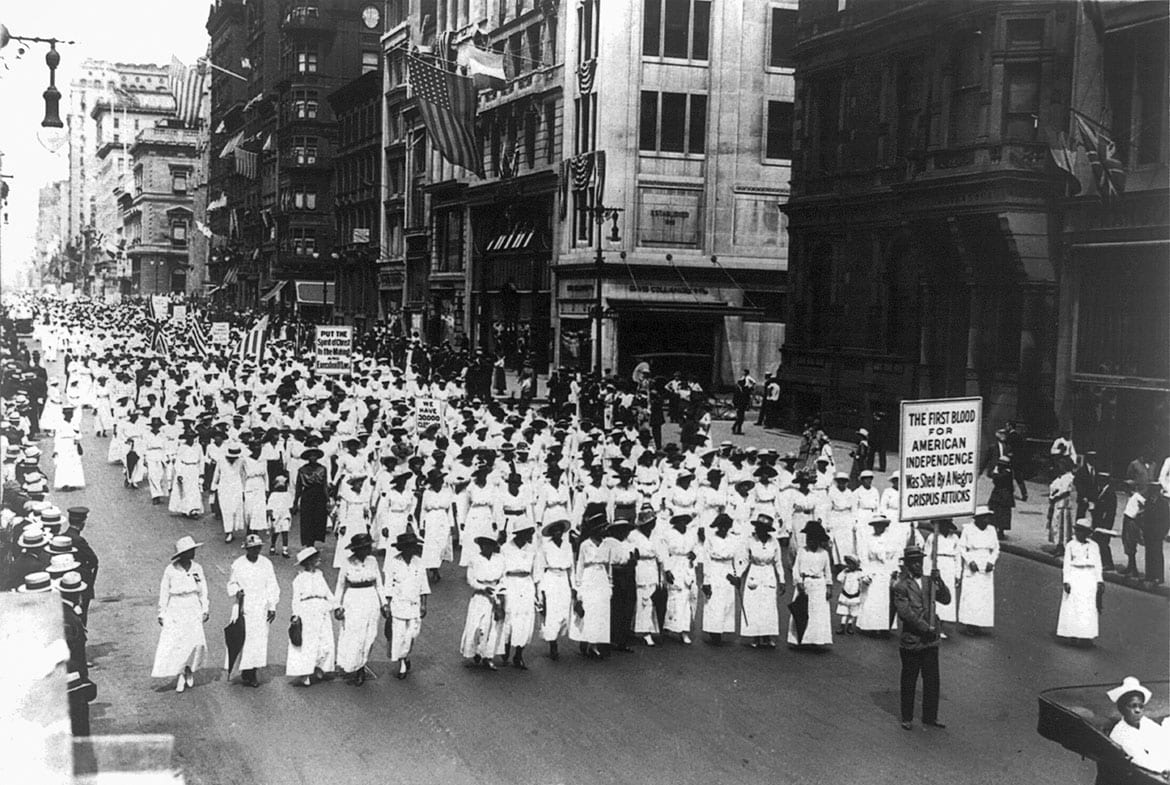
Featured
Recovering the Black Social Gospel
The figures, conflicts, and ideas that forged ‘the new abolition.’
Library of Congress Prints and Photographs Division Washington, D.C. cph 3a34294. PD
By Gary Dorrien
The black social gospel is wrongly and strangely overlooked. Few books refer to it, there are no books on this tradition as a whole, and the phrase registers almost nothing on Google. Yet this is the category that best describes Martin Luther King Jr., his chief mentors, his closest movement allies, and the entire tradition of black church racial justice activism reaching back to the 1880s.
The “civil rights movement” actually began in 1884 with a call for what became the National Afro-American League in 1890, which was followed by a brilliant moment of hope in the Niagara Movement of 1905 to 1909. A second phase of activism occurred in 1910 with the founding of what became the National Association for the Advancement of Colored People (NAACP). The historic mass movement that exploded in December 1955 was a third phase. In every phase, the movement had leaders that espoused the social ethical religion and politics of modern social Christianity.
Yet most scholars have ignored the black social gospel that supported civil rights activism in all three of its historic phases, struggled for a place in the black churches, and provided the neo-abolitionist theology that the civil rights movement spoke and sang. Martin Luther King did not come from nowhere, nor did the embattled theology of social justice he espoused. There was a black tradition of the social gospel that supplied leaders and ballast to the heyday years of the civil rights movement and that provided much of the movement’s intellectual underpinning. This tradition built upon affirmations of human dignity and divine justice that most black churches proclaimed in a distinct way. And it remains a vital perspective.
The white social gospel movement is renowned and heavily chronicled. It arose during the Progressive Era, and by the mid-1880s it had already yielded national organizations and a movement agenda linked with Progressivism. Its heyday from 1900 to 1917 was the greatest wave of social justice activism ever generated by the white mainline Protestant churches in this country.1 By the 1930s it was mostly a peace and ecumenical movement.
Though the black social gospel grew out of the abolitionist tradition, it responded to new challenges in a new era of American history: the abandonment of Reconstruction, the evisceration of constitutional rights, an upsurge of racial lynching and Jim Crow abuse, struggles for mere survival in every part of the nation, and the excruciating question of what a new abolition would require. Like the white social gospel and Progressive movements, the early black social gospel responded to industrialization and economic injustice, and regarded the federal government as an indispensable guarantor of constitutional rights. It also wrestled with modern challenges to religious belief. But the black social gospel addressed these issues very differently from white Progressives, for racial oppression trumped everything in the African American context and refigured how other problems were experienced.
White social gospel theologians took for granted their access to the general public, but black social gospel theologians could barely imagine what it felt like to address the general public. They had to create a counter-public sphere merely to have a public. White social gospel theologians sought to be stewards of a good society and usually preached a moral influence theory of the cross, otherwise playing down the cross of Jesus as problematic for modern Christianity. The black social gospel arose from churches where preaching about the cross was not optional, because black Americans experienced it every day as a persecuted, crucified people. Here, the belief in a divine ground of human selfhood powered struggles for black self-determination and campaigns of resistance to white oppression.
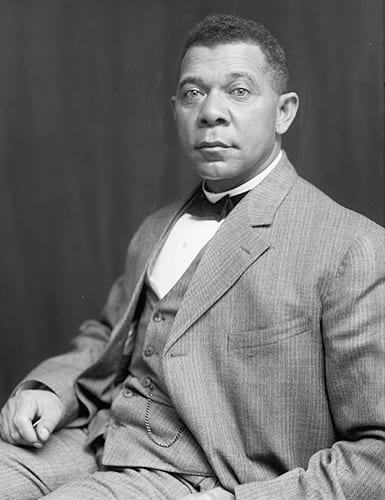
Booker T. Washington, half-length portrait, seated, c. 1985. United States Library of Congress’s Prints and Photographs division, ppmsca.23961. PD
Broadly, there were four groups in black social Christianity, plus a tiny socialist flank. The first group identified with Booker T. Washington and his program of political accommodation and economic uplift. The second group contended that African Americans needed their own nation; African Methodist Episcopal (AME) bishop Henry McNeal Turner and Episcopal cleric Alexander Crummell were leading black nationalists. The third group advocated protest activism for racial justice, strongly opposing Washington; its early exponents included AME minister Reverdy C. Ransom and antilynching crusader Ida B. Wells-Barnett. The fourth group navigated between the pro-Washington and anti-Washington forces, imploring against factional division. Its leading proponents included Baptist pastor Adam Clayton Powell Sr. and Baptist educator Nannie Burroughs.
All four of these ideological factions existed before W. E. B. Du Bois emerged as the intellectual leader of the protest tradition. A full-fledged black social gospel tradition emerged from these groups, though mostly from the third and fourth.2 This full-orbed black social gospel—my operative definition of the category—combined an emphasis on black dignity and personhood with protest activism for racial justice, a comprehensive social justice agenda, an insistence that authentic Christian faith is incompatible with racial prejudice, an emphasis on the social ethical teaching of Jesus, and an acceptance of modern scholarship and social consciousness.
Today, Booker T. Washington is remembered chiefly as the symbol of a demoralizing strategy that sold out black Americans and failed on its own terms. With so much counting against him, it has become difficult to fathom why he was a colossal figure in American life in the early 1900s, remaining so for decades after he lost the argument and passed on. Booker Washington was complex, wily, opaque, and awesomely accomplished. He built Tuskegee Institute in the face of Ku Klux Klan terrorism, a mania of lynching, a Southern civil religion of “Lost Cause” propaganda, and a suffocating plague of disenfranchisement and Jim Crow abuse. He cultivated an image of simple altruism while fighting in a savvy, calculated fashion for as much power as he could get, fulfilling the American fantasy of ascending from poverty and disadvantage to greatness.
Washington publicly accommodated disenfranchisement and segregation, while he privately organized legal efforts to thwart both. He told African Americans to stay out of politics even after he became the nation’s leading black patronage broker (denying the federal patronage appointments he routinely made). He hobnobbed with the high and mighty but stayed in touch with the struggles of ordinary people. He attracted wealthy benefactors, became an advisor to four U.S. presidents, launched hundreds of community schools, and amassed a powerful political machine. He bought black newspapers and controlled them (denying that, too). He controlled college presidents through his influence with philanthropists, monopolizing racial philanthropy, and bullied his competitors, hiring spies to infiltrate rival organizations. For a while he was so dominant that many Bookerites, and Washington himself, believed there was no such thing as a legitimate opposition.
Washington keenly understood that most white Southerners of his time did not want black Americans to succeed at anything besides picking cotton, because any black success raised the frightening specter of “Negro rule.” A black postmaster represented Negro rule. A black shopkeeper, a black teacher, or a black lawyer represented Negro rule. On the few occasions that he explained his strategy, he wrote quintessential descriptions of political realism. But Washington’s realism bartered the civil and political rights of black Americans for a season of interracial peace and economic opportunity. Instead, everything got worse for African Americans while Washington ascended to national eminence, setting him up for a devastating backlash. Booker T. Washington was the first black leader to be selected by white Americans, an arrangement he lived to see unravel. For the “race problem” in America was white racism, and the antidote to it had no chance of coming out of Alabama.

Founders of the Niagara Movement. Library of Congress Prints and Photographs Division, Washington, D.C. LC-DIG-ppmsca-37818. PD
Powerfully linked with the conservative assimilation wing of the white social gospel led by Brooklyn minister Lyman Abbott, Washington epitomized an influential version of the social gospel. Abbott, editor of Outlook magazine, serialized Washington’s memoir Up from Slavery to his vast audience and lauded Washington as the answer to “the race problem.” The very term “social gospel” gained currency in the 1890s as the title of a journal by a white Christian socialist community in Georgia seeking to build a school modeled on Tuskegee’s trinity of work, education, and Christianity. For Washington, Christianity was a practical faith: it nurtured the correct moral virtues, and it helped to build a good society—exactly as white social gospel leaders said. Washington urged that black church religion, especially in the South, wrongly separated religion from morality. Churches needed to become more ethical and less emotional, caring about righteousness rather than rapture.
Every alternative to Washington was compelled to define its relationship to him. Nationalists took the Turner path of advocating national separation and African emigration.3 Then as now, there were different kinds of black nationalism—the idea that all people of African descent share something as a nation or people.4 Some devoted themselves to colonizing West Africa (following Turner) or Haiti (following James T. Holly), but many eventually gave up on emigration (following Crummell). Much of the nationalist tradition shared the emphases of Crummell and Turner on moral uplift, authority, elite leadership, and the shortcomings of ordinary black Americans. Despite its rhetoric of separation, the nationalist tradition played a major role in transmitting assimilationist values into African American culture. Most black nationalists were politically conservative and nearly all were culturally conservative. Black nationalism had its most electrifying moment after World War I, with the rise of Marcus Garvey’s back-to-Africa movement.
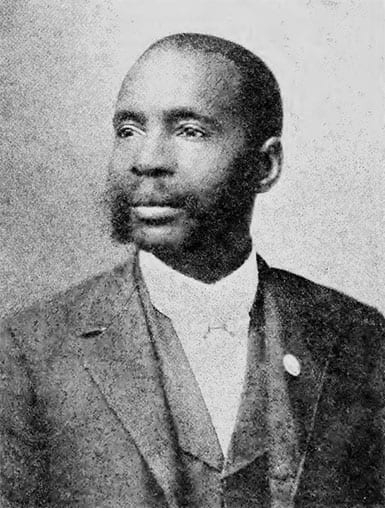
George W. Woodbey. PD
The third group was the crucial one, as this group vehemently opposed Washington’s strategy and his “Tuskegee Machine” by calling for a new abolitionist politics of racial and social justice. The full-fledged black social gospel emerged mostly from this group.5 The fourth group, however, helped to sway how the argument over Bookerism turned out by urging that Du Bois-style militancy and Washington-style realism were both indispensable. This both/and group appealed to many who felt alienated by the ideological bickering between groups advocating protest versus those calling for accommodation. Religious communities brought together the rival camps and the nonaligned, and ministers appealed to Christian fellowship and racial solidarity, especially since many had friends on both sides of the partisan divide.6
Meanwhile, there was a tiny flank that held out against capitalism. Baptist minister George W. Woodbey was a leading figure in this group. Woodbey had a long career as a Socialist Party organizer and was also active in the Industrial Workers of the World (IWW). There were black socialists besides Du Bois and Ransom in the mainstream of the NAACP, notably Robert W. Bagnall and George Frazier Miller. But socialism had a lot going against it in black communities: a fantasized solidarity with a racist white proletariat, the specter of appearing to be anti-American, and the desire of African Americans to own property and succeed in the existing system. These factors suppressed Du Bois’s socialism for twenty years.
Numerous conventions have long kept the black social gospel from being remembered, and they remain obstacles to recovering it today. It is usually assumed that the early black social gospel numbered only a handful of ministers, which is why I have begun by refuting this deadly assumption. For decades, scholars claimed that the social gospel was an overwhelmingly white phenomenon that ignored racial justice issues. These claims obscured the complex and conflicted debates that white Christian Progressives held about racial justice and obscured the existence of black social gospelers. In addition, Washington and Du Bois are usually read out of social Christianity, notwithstanding that both influenced it enormously. Many scholars have recycled the convention that black churches were too self-centered and preoccupied with survival to advocate a social justice agenda, never mind that black social gospel leaders addressed this issue constantly.
A broader convention of American historiography has applied with particular vengeance to black social gospel leaders: that religious intellectuals no longer mattered by the end of the nineteenth century. Historians have tended to favor black academics of the early twentieth century—Ralph Bunche, Alain Locke, Abram Harris, E. Franklin Frazier, and Rayford Logan—who shared the customary academic prejudice against religion and religious intellectuals, contending that the black church was hopelessly provincial and conservative. Given these assumptions, black social gospel intellectuals such as Ransom, Richard R. Wright Jr., and Mordecai Wyatt Johnson had no chance of being remembered, and even Benjamin Mays and Howard Thurman were overlooked for decades.
Another kind of dismissal reasons that the category “social gospel” does not name anything worth distinguishing in African American Christianity. This objection comports with the image of a singular, politically active “black church” that is held by many. But black churches have always been widely diverse theologically, politically, culturally, and socially. There has never been a dominant or singular “black church” that fits the stereotpyical mold, which—ironically enough—is itself a social gospel construct. The social gospel idea of what the “black church” is, or should be, has obscured the fact that many black religious communities reject it.
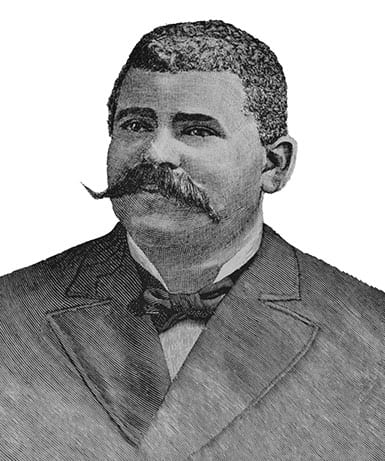
William J. Simmons. Wikipedia, PD
Throughout the first and second phases of the civil rights movement, and even in its heyday (the third phase), only a minority of African American congregations supported social justice preaching and activism. The chief founder of the National Baptist Convention, William Simmons, was accused throughout his career of replacing religion with politics, notwithstanding his powerful revival preaching. Ransom’s clerical colleagues in Chicago and Boston were so offended by his advocacy of the social gospel that they drove him out of both cities, despite the fact that Ransom belonged to an abolitionist denomination and ministered in the two cities that seemed best suited to support social gospel activism.
After years of being thwarted by bishops, Ransom and Wright reluctantly concluded that they had to become bishops themselves. Then they vied with fellow bishops who wanted nothing to do with protest movements. Carter Woodson, writing the first comprehensive history of black Christianity in 1921, organized his account around the battle between a minority tradition of Progressives, linked to abolitionism and the social gospel, and a dominant tradition of conservatives that resisted modernity and social religion. A decade later, Mays documented that most black churches did not preach or practice anything like his concept of social gospel religion. A generation later, King had ample experience with this problem, as his own denomination opposed the civil rights movement and only a minority of black congregations supported it during his lifetime.7
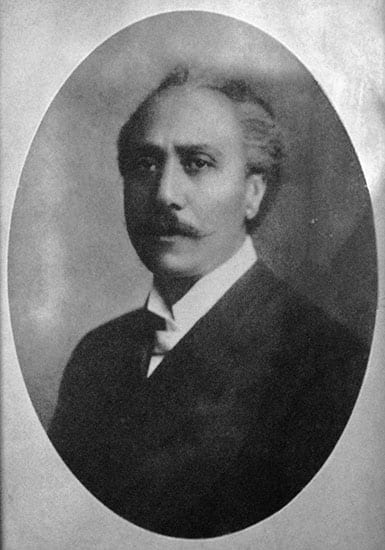
Reverdy C. Ransom. PD
The founders of black social Christianity were marginalized in their interactions with the white social gospel movement and within African American Christianity. They were marginalized ecumenically because white American Protestantism was as segregated and white supremacist as the rest of American society. They were marginalized in black churches for pressing a national social justice agenda and for adopting social gospel theology. Some of them succeeded sufficiently to win denominational leadership positions, take over publishing houses, and change the mainstream. But their long struggle for legitimacy and recognition kept them from being remembered after they were gone. Simmons, Ransom, Wells-Barnett, Burroughs, Alexander Walters, Woodbey, Johnson, and Wright would not have been forgotten had scholars and journalists paid attention to the black social gospel.
The black social gospel had a distinct integrity, and many of its leaders had significant dealings with white social gospelers and Progressives. Some black social gospel leaders became public figures by bridging both worlds, providing rare evidence that such a thing was possible in Jim Crow America. Walters, Johnson, Mays, and Thurman had sparkling careers on the lecture circuits of ecumenical organizations, especially the Student Christian Movement. Some black social gospel leaders had dual memberships in black and white Baptist denominations. Some belonged to black denominations that were deeply involved in the ecumenical movement. Some operated in predominantly white denominations, especially the Episcopal and Congregational Churches. Ransom, Walters, George Haynes, and Mays were important players in the Federal Council of Churches, and Woodbey was the Socialist Party’s leading black organizer and author. But these relationships were not reciprocal. White church leaders did not treat their African American colleagues as equal contributors to social gospel ecumenism, and the Socialist Party made little attempt to recruit black members.
I confess to admiring these black apostles who dreamed of abolishing America’s racial caste system. They resisted with shimmering dignity, even as some were deeply wounded by racism. They wrung a liberating message from the Christianity of their time. They did not settle for making segregation more tolerable. They rebelled and endured, taking the long view, laying the groundwork for something better than the regime of oppression and exclusion they inherited. They were the first to conceive what social salvation could mean in post-Reconstruction black religion.
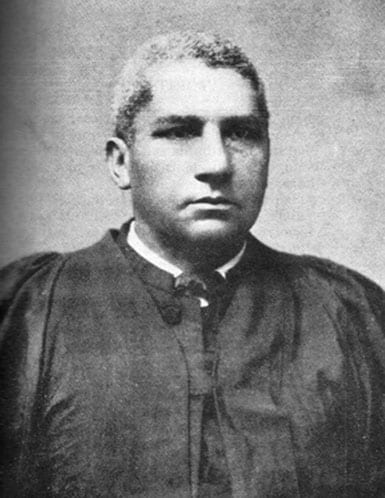
Henry McNeal Turner. PD
Sometimes they played into the hands of white racists, advocating what scholars today call the “politics of respectability.” The nationalist tradition, in particular, sometimes folded ugly denigrations of black humanity into its message of racial solidarity. And, in their preaching about family life, some social gospel ministers caused particular harm to women, exhorting women to keep the churches going but providing no chance of becoming church or public leaders. Whenever they preached about gay and lesbian sexuality, it was in condemnation. Sometimes they exaggerated the conservatism of their black church opponents, which undercut the very moral agency they sought to mobilize. But the problems of developing black leaders and transcending “compensatory religion” were terribly real for black social gospel ministers, and without their witness the radical social gospel theology and activism of King are inexplicable.8
Henry McNeal Turner and William Simmons bridged the Civil War and Progressive generations, clearing a path for the social gospel in different ways. Turner enabled new abolition movements he did not join, believing that America was hopelessly hostile territory for blacks. He was singly responsible for much of the explosive growth the AME Church in Georgia experienced during Reconstruction. He roared for equal rights and the dream of African emigration. He preached a gospel of Christian revival and personal responsibility, teaching that God is black. He defied white terrorists fearlessly but was rough on underachievers and whiners, too, blistering those he called “scullions.” Having worked hard for the Republican Party, Turner came to despise it after the party sold out Reconstruction. Though he became easy to forget after Du Bois entered the picture, he was a giant figure in the black church struggle against white racism, and his thought distinctly prefigured liberation theology.
Like Turner, Simmons worked hard for Radical Reconstruction, and he treasured the abolitionists, conceiving the God of the Bible as a partisan, a liberating friend of the poor and oppressed. As a journalist, author, educator, and minister, Simmons kept alive the witness and lore of David Walker, Sojourner Truth, Nat Turner, Henry Highland Garnet, Frederick Douglass, and other black abolitionists. He stood up for the rights and empowerment of women, insisting that feminism had an important role to play in the new Christian abolition. He mediated the debate among black Baptists over assimilation versus separatism, taking a middling position that did not prevail in the National Baptist Convention. He also mediated an intense debate among black Baptists about the priority of higher education. Had Simmons lived to see the issue become Du Bois versus Washington, he undoubtedly would have kept saying that higher education and vocational education were equally important and should not be set against each other.

Ida B. Wells-Barnett. Wikimedia Commons, PD
Three other figures who played major roles in early black social Christianity were Reverdy Ransom, Ida Wells-Barnett, and Alexander Walters. Personifying the spirit of the Niagara Movement, Ransom espoused liberal social gospel theology and radical social gospel socialism. He pioneered the cause of black Christian socialism and cut his teeth in politics by joining Wells’s antilynching crusade. Wells, more than anyone, established that the struggle against lynching had to be the defining issue for the new abolition. She inspired, implored, and shamed such a movement into being. In the early 1890s, she was a sensational figure. She married Frederick Barnett and pulled back from full-time activism just as Washington skyrocketed to eminence and Alexander Walters emerged as a civil rights leader. Walters tried to redefine the black Christian mainstream by blending social gospel theology, political independence, pan-African consciousness, and civil rights activism. Symbolizing the volatile racial politics of the early twentieth century, he advocated civil rights while trying to hold together an activist organization with pro-Washington and anti-Washington flanks.9
In different ways, these figures made society a subject of redemption, making their mark before Kelly Miller, a Howard University dean and sociologist, identified Du Bois with radicalism and Washington with conservatism, introducing the binary distinction that has ruled the field ever since. Miller was socially conservative, antifeminist, strongly pro-capitalist, thoroughly middle class, and imbued with indignation that white America violated his rights as a human being and a citizen. As he tried to keep the two groups from breaking apart, Miller stressed that even black conservatives opposed racism and noted that the Du Bois faction was vastly outnumbered. Many ministers also implored against breaking apart. Adam Clayton Powell Sr. put it poignantly many times, denying that black conservativism existed in the first place. There are no black conservatives, Powell would say, so why are we fighting over radical versus conservative?
In his landmark work Black Religion and Black Radicalism (1973), liberationist historian Gayraud Wilmore offered an answer to this question that built upon Miller’s historic distinction. First, Wilmore argued, there was definitely such a thing as black conservatism, contrary to integrationist liberals like Powell. Second, what mattered was to define and defend black radicalism. Wil-more offered a three-factor definition of the radical tradition in black religion: 1) It sought to be liberated from white domination; 2) It commended respect for Africa; and 3) It used protest and agitation in the struggle for liberation. Wilmore noted that black radicalism, thus defined, was usually less political and ideological than other forms of radical politics, such as social democracy, communism, or progressivism. In black radicalism, “race and color are at the root of the problems of Western civilization.” Black radicalism perceived the soul sickness of white society—something deeper than mere racism—and thus it did not sing the liberal song of racial integration.10
For Wilmore, the exemplary black radical was Turner. Turner was deeply alienated from white society, and he called for reparations to finance black emigration to West Africa, whereas social gospel liberals (like Powell) lacked the will to fight white supremacy. Wilmore further argued that Turner should have challenged Washington for national leadership after Frederick Douglass died, but Turner failed to try, and afterwards black Christianity produced a generation of leaders barely worth mentioning. On these bases, Wilmore ignored most black social gospel leaders of the early twentieth century, and his indispensable account of black religion would dominate black religious historiography for four decades.
I think the black social gospel founders deserved more credit than Wilmore gave them. They advocated for social justice causes that Turner spurned. Moreover, there were three important reasons why Turner did not challenge Washington in the late 1890s. First, he lost influence by insulting African Americans with harshly demeaning statements. Second, he lost followers by insisting on back-to-Africa. And third, he shared most of Washington’s ideology. For Turner, African Americans had to have their own nation; everything else—including the Du Bois versus Washington debate—was a sideshow. The Du Bois group had a better plan, and even if it eventually required cutting a deal with white liberals, this did not signal a lack of commitment to abolishing white oppression.
W. E. B. Du Bois is central to this story because he changed the conversation. He did not merely take up an existing critique of Washington’s strategy; he inspired a revolution of consciousness that defined the problem of the twentieth century. He provided a language for the problem of the color line and helped to launch the pan-African movement, the Niagara Movement, and the NAACP. And he helped to radicalize the black social gospel through his influence on Ransom, Wright, Walters, Waldron, Powell, Johnson, Mays, and others.
The double-consciousness that Du Bois projected onto all African Americans was deeply and powerfully true for him: He was simultaneously black and American. He railed against the evils of white civilization while affirming the intellectualism and progressive social ideals that he internalized from white civilization. Thus, Du Bois fashioned an alternative to the draining debate between nationalists and integrationists by affirming his own tortured double-consciousness. Black Americans had to stop taking sides about which of their selves to give up, opting for a richer, contentious, full-bodied struggle for liberation and radical democracy.
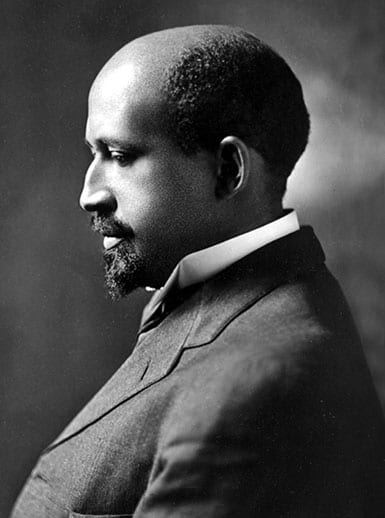
W. E. B. Du Bois. Wikimedia Commons, PD
Du Bois was educated during the heyday of evolutionary idealism and social Darwinism, and his early writings were shot through with both. It took him several years to drop neo-Lamarckian theory and social Darwinism, temper his emphasis on moral failings and uplift elitism, let go of romantic imperialism, and pull back from his neo-Hegelian idealism. Later, he absorbed Freud and Marx and dropped the too-simple, idealistic, dualistic idea of double-consciousness. But through all his shifts and phases, Du Bois fixed on exemplary individuals.
Du Bois mined the fissure between his status as a member of a denigrated caste and his role as a race leader. For many years Du Bois had to live down the charge that he cared about elite performers while Washington cared about ordinary workers. There was always something ridiculous about this comparison, yet Du Bois provided grist for it by insisting, in the spirit of Crummell, “The Negro race, like all races, is going to be saved by its exceptional men.”11 This trope provided quotable material for countless sermons, editorials, church bulletins, and commencement addresses. Gradually, Du Bois became forthright about his commitment to economic justice and critiqued the ravages of global capitalism. But even after embracing radical democratic socialism, he was not dissuaded from focusing on what it meant to be an exemplar in a wretched time.
Du Bois loathed religious orthodoxy because it stunted human souls. He could be blistering on this theme, which gave heartburn to social gospel ministers, who tried to say similar things without offending churchgoers. In 1940, speaking at Wilberforce University’s commencement, Du Bois excoriated the school’s Christian legacy as “childish belief in fairy tales, a word-of-mouth adherence to dogma, and a certain sectarian exclusiveness.” Wilberforce’s tradition of religious orthodoxy, he charged, was “a miserable apprehension of the teaching of Christ.”12
Du Bois, however, had a spiritual wellspring of his own. He was a keen appreciator of Jesus, and his argument with the black church was a lover’s quarrel. His writings were strewn with religious images and references, even after he supposedly dropped religion for Marxism. The Souls of Black Folk famously invoked “our spiritual strivings” and lauded the spirituals. He began his book Darkwater with the social gospel “Credo,” conjured a black baby Jesus in his essay “The Second Coming,” conjured an adult black Jesus in the scathing “Jesus Christ in Texas,” and ended with a “Hymn to the Peoples,” in which the Buddha walked with Christ. As late as the 1950s, Du Bois was still writing about saving “the tattered shreds of God.”13
His passionate, unorthodox spiritual sensibility came through to many readers. They understood that a religious, arguably Christian passion lay behind Du Bois’s furious attacks on unworthy ministers and church dogmatism. Even at Wilberforce, Du Bois stumped for social gospel religion: “Christianity means sympathy; the realization of what it costs a human being to live and support a family in decency. . . . Christianity means unselfishness; the willingness to forego in part one’s personal advantage and give up some personal desires for the sake of a larger end which will be for the advantage of a greater number of people.”14
This was an echo of what the younger Du Bois had hoped the church would become under the sway of the social gospel. For Du Bois, nothing compared to the black church as a source of inspiration, hope, solidarity, identity, belonging, moral language, and transcendent meaning. Black Americans owned nothing else outright. Du Bois stressed that any movement worth building had to share in the life of the black church, speaking its language of hope and redemption. The Niagara Movement, and later the NAACP, had to include religious leaders, reaching beyond the usual circle of urban professionals. Though he has often been argued out of the lineage, the black social gospel happened among church leaders who appropriated Du Bois for their own contexts.
I grew up in a lower-class, semi-rural area in mid-Michigan, where my father became passably white by moving away from Michigan’s Upper Peninsula. His Cree heritage made him a target of racial abuse while growing up, so he raised his five sons as definitely white, never mind that we had obviously Native American relatives. My nominally Catholic family got to Mass just enough for something to break through my everyday, lower-class, sports-fixated horizon: The image of the suffering God on a cross. Then the stunning witness of King and the civil rights movement broke through. Long before I understood very much about politics or religion, King was the formative figure for me, the exemplar of the peacemaking and justice-making way of Christ. That was the sum total of my religious worldview when I squeaked into college, mostly to play sports. Four decades later it is still my bedrock.
My neighbors and relatives did not talk about going to college or having a “career,” and they would have repudiated the notion that being white conferred any cultural privileges upon them—even as they struggled to secure whatever white privilege they could get and passed it on to their children, including me. Interrogating one’s racial bias is exceedingly difficult. Interrogating one’s complicity in white supremacy—a structure of power based on privilege that presumes to define what is normal—is harder yet. I am torn between knowing that I am terribly limited as an interpreter of African American social Christianity and believing it deserves all the books it can get, even from me. For twenty years, I have sprinkled discussions of the black social gospel into various books, arguing that this category best describes the theological and social ethical line that led to King. Twenty years ago there were not many of us; now there are many more, mainly because African American scholars have entered the academy in more significant numbers. Clayborne Carson, Evelyn Brooks Higginbotham, Calvin Morris, Randal Jelks, Anthony Pinn, Jonathan L. Walton, and Walter Fluker have played leading roles in recovering the black social gospel.15
This work of retrieval is enormously important to me, though I have one misgiving: that this is overwhelmingly a tradition of male ministers. Some women broke through anyway, achieving public influence, usually by working through organizations they created. Burroughs, Lucy Smith, and Sarah Layten worked through the Women’s Convention of the National Baptist Convention. Mary Church Terrell, Lucy Thurman, Mary B. Talbert, and others similarly served as leaders of the National Association of Colored Women (NACW), which began in 1896 with Victorian calls to true womanhood and purified homes but went on to become deeply involved in suffrage, antilynching, and antisegregation activism. For many women, the coming of the NACW was a godsend because it offered African American women an opportunity to work together outside the church.
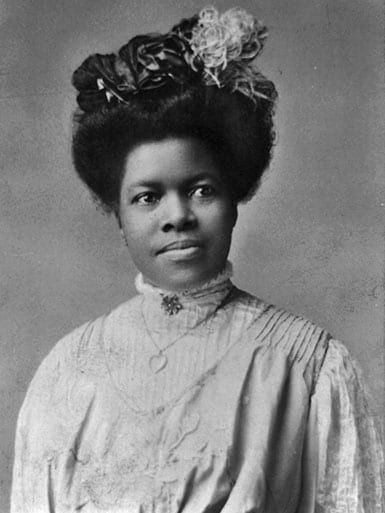
Nannie Helen Burroughs. Library of Congress Prints and Photographs Division Washington, D.C., cph.3b46093. PD
Some women found their way to Holiness or Pentecostal congregations, which rejected the assimilated formality of traditional churches and allowed female leadership. The Holiness and Pentecostal movements were overwhelmingly female on both sides of the color line, featuring oral music, rhythm, testimony, ecstatic praise traditions, and a holistic worldview. The irony of Sanctification Christianity cuts across the color line: With few exceptions, the churches that had female leaders did not embrace social justice religion, and the churches that embraced the social gospel did not allow female leaders.
In her luminous reflection on the politics of black religion, Your Spirits Walk beside Us, historian Barbara Dianne Savagenotes that three scholars had the greatest influence on the historiography of nineteenth- and early twentieth-century black American Christianity: Du Bois, Woodson, and Mays. All were unsettled by the emotional fervor of rural black worship and the Sanctification churches. All appreciated the emotional vitality of black religion while calling for modernized churches committed to social justice theology. All said sympathetic things about the women who belonged to and sustained black churches, but all three perpetuated the view that black churches needed strong and progressive male ministers more than they needed anything else. Savage aptly observes that by giving highest priority to developing a male clerical elite, these leaders silenced the two largest groups: “The majority of church members, who were women, and the majority of men, who remained outside the churches.”16
Yet black America needed male ministers because there was a dearth of male leadership in other arenas, and the church had become the most important institution in African American life. As Woodson put it, he attended Shiloh Baptist Church in Washington, DC, for two reasons: “I find there better people than I do on the outside,” and “I find my people there, and I cannot help them unless I remain among them.”17 This was a decidedly social gospel rationale for belonging to a church. But while Woodson acknowledged that women made the best Christians and kept the black churches going, his only word for them was to carry on as they were. The wing of black Christianity that talked about being progressive and modern pulled back when it came to women; the leading exceptions to this attitude were Turner, Simmons, and Ransom. For similar reasons, there were no progressive inklings concerning gay and lesbian sexuality, a subject on which both Powells spoke vehemently from the pulpit.
The black social gospel thus had shortcomings in the very areas that roil churches today. But this tradition has a legacy unsurpassed by any religious tradition or movement in U.S. history. For fifty years, black religion fixed on the dream of abolition. Then came Emancipation—a veritable “Coming of the Lord,” as Du Bois put it—only to be followed by the terrible necessity of imagining a new abolition. Black Christian leaders of the late nineteenth and early twentieth centuries had much at stake in the question whether they should fuse social justice politics with progressive theology. There were just enough of these defiant, dignified, visionary figures to make a difference. These leaders paved the way for the civil rights explosion of the 1950s and 1960s and helped to inspire America’s greatest liberation movement.18
Notes:
- Leading white social gospel figures included Washington Gladden, Graham Taylor, George Herron, Jane Addams, Harry Ward, Vida Scudder, Francis McConnell, and the great Walter Rauschenbusch.
- In addition to Ransom and Powell, major black social gospel leaders of the early twentieth century included African Methodist Episcopal Zion bishop Alexander Walters, Presbyterian pastor Francis Grimké, and AME minister Richard R. Wright Jr. After the NAACP was founded, the protest tradition won the ideological argument, attracting a new generation of leaders, nearly all of whom were ordained ministers and held graduate degrees. They included Howard University president Mordecai Wyatt Johnson, Morehouse College president Benjamin E. Mays, Baptist pastors Vernon Johns and J. Pius Barbour, theologian Howard Thurman, and minister and politician Adam Clayton Powell Jr. Then came the King generation, notably ministers Wyatt Tee Walker, Fred Shuttlesworth, Andrew Young, Ralph Abernathy, James Lawson, and Joseph Lowery; activists John Lewis, Diane Nash, James Bevel, and Bernard Lafayette; and lawyer/priest Pauli Murray.
- Alexander Crummell was an important leader of this group, as was Episcopal bishop and missionary James T. Holly.
- In the nineteenth and twentieth centuries, the posited basis for national belonging was sometimes biological, rendering the nation as analogous to a biological organism; or ontological, making a claim about the distinct being of blackness; or cultural or sociohistorical, making a claim about black cultural authenticity or distinctiveness.
- In addition to Ransom and Wells, there were many others in this group, including Baptist ministers James R. L. Diggs, Peter James Bryant, and William Jefferson White, Congregational minister Byron Gunner, Episcopal rectors Robert W. Bagnall and George Frazier Miller.
- In addition to Burroughs and Powell Sr., leading figures included sociologists Monroe Work and George Haynes, Methodist minister William Henry Brooks, and Baptist feminists Lucy Smith and Sarah Layten.
- Carter G. Woodson, The History of the Negro Church (Associated Publishers, 1921); Benjamin E. Mays and Joseph W. Nicholson, The Negro’s Church (Institute of Social and Religious Research, 1933).
- On the “politics of respectability,” see Evelyn Brooks Higginbotham, Righteous Discontent: The Women’s Movement in the Black Baptist Church, 1880–1920 (Harvard University Press, 1993), 185–229; Kevin Gaines, Uplifting the Race: Black Leadership, Politics, and Culture in the Twentieth Century (University of North Carolina Press, 1996), 31–78; and Walter Earl Fluker, “Recognition, Respectability, and Loyalty: Black Churches and the Quest for Civility,” in New Day Begun: African American Churches and Civic Culture in Post-Civil Rights America, ed. Drew Smith (Duke University Press, 2003), 120–124. On “compensatory religion,” see Mays and Nicholson, The Negro’s Church, 25–26.
- In the case of Alexander Walters, the usual story of embattlement with the church did not occur; the AME Zion Church took pride in his leadership.
- Gayraud S. Wilmore, Black Religion and Black Radicalism: An Interpretation of the Religious History of African Americans (Doubleday, 1973; 3rd ed., Orbis Books, 1998), ix, 197.
- W. E. B. Du Bois, “The Talented Tenth,” in The Negro Problem: A Series of Articles by Representative Negroes of To-day (1903; repr., AMS, 1970), 33; see Lawrie Balfour, Democracy’s Reconstruction: Thinking Politically with W. E. B. Du Bois (Oxford University Press, 2011), 71–75.
- W. E. B. Du Bois, “The Future of Wilberforce University,” Journal of Negro Education 9 (October 1940): 564–565.
- W. E. B. Du Bois, Darkwater: Voices from within the Veil (Harcourt and Brace, 1920; repr., Dover, 1999), 1–2, 60–62, 70–77, 161–162; Du Bois, “Untitled,” in Creative Writings by W. E. B. Du Bois, ed. Herbert Aptheker (Kraus-Thomson, 1985), 41; Jonathon S. Kahn, Divine Discontent: The Religious Imagination of W. E. B. Du Bois (Oxford University Press, 2009), 3–8.
- Du Bois, “The Future of Wilberforce University,” 565.
- See Clayborne Carson, “Martin Luther King, Jr., and the African-American Social Gospel,” in African American Religious Thought: An Anthology, ed. Cornel West and Eddie S. Glaude Jr. (Westminster John Knox, 2003), 696–714; Calvin S. Morris, Reverdy C. Ransom: Black Advocate of the Social Gospel (University Press of America, 1990); Randal M. Jelks, Benjamin Elijah Mays: Schoolmaster of the Movement (University of North Carolina Press, 2012); Anthony B. Pinn, The African American Religious Experience in America (Greenwood, 2005); Walter E. Fluker, They Looked for a City: A Comparative Analysis of the Ideal of Community in the Thought of Howard Thurman and Martin Luther King Jr. (University Press of America, 1989).
- Barbara Dianne Savage, Your Spirits Walk beside Us: The Politics of Black Religion (Harvard University Press, 2008), 23.
- Ibid., 47; Carter G. Woodson, “A United Negro Church,” New York Age, August 15, 1931, 9; Woodson, “Difficulties in Way of the United Church,” New York Age, August 21, 1931, 9.
- This essay is an edited version of the Horace De Y. Lentz Lecture that was delivered at Harvard Divinity School on March 23, 2015. The lecture was adapted from Dorrien’s forthcoming book.
Gary Dorrien is Reinhold Niebuhr Professor of Social Ethics at Union Theological Seminary and Professor of Religion at Columbia University. His sixteen previous books include Kantian Reason and Hegelian Spirit, which won the Association of American Publishers’ PROSE Award for the best book in theology and religious studies of 2012. Dorrien’s book, The New Abolition: W. E. B. Du Bois and the Black Social Gospel—the first of two volumes on the black social gospel tradition—is available from Yale University Press.
Please follow our Commentary Guidelines when engaging in discussion on this site.

